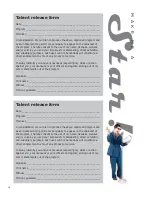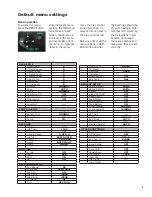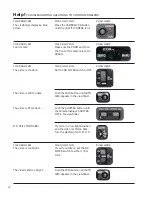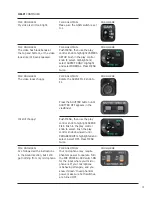
4
4
TYPICAL INTERVIEW SETUP SHOOTING BETTER VIDEO
We’ll begin with a wide shot
which helps the viewer under-
stand where this interview is tak-
ing place. Wide shots are often
used to establish location and are
sometimes referred to as “estab-
lishing shots.”
Next, we’ll get closer and show
the interviewer (on the left) and
the subject (on the right) togeth-
er at the table. In our example,
this would be a good shot for the
interviewer to deliver her first
question.
Third, we’ll get a close-up of our
subject. This particular shot is
actually a “medium close-up” and
could also be called a “head and
shoulders” shot.
The bulk of action for our inter-
view will take place in the close-
up as the subject answers the
interviewer’s questions.
You may wish to cut out sections of the subject’s response that aren’t
relevant or are filled with “ums” and “ahs.” If you edit together two
close-ups of the subject, the result will be a jump cut. To avoid that,
we’ll shoot cutaways.
A cutaway is any shot used to cover jump cut edits in primary shots
or add a new dimension to a video story. In our example, we could
show the subject’s hands or the interviewer listening to keep the
video flowing smoothly.
The 180° Rule
If you’re shooting a scene
with two subjects, imagine
there is a line connecting
them. That line is called the
“axis of action.” Don’t shoot
on both sides of the axis.
Keep all your shots on the
same side.
In our example, the axis of
action is between the inter-
viewer and the subject.
Notice that in every shot, re-
gardless of framing or angle,
the interviewer is always on
the left and the subject is al-
ways on the right. If we took
a shot or two from the other
side of the table and edited
it together, the interviewer
would be on the right and the
subject on the left in those
shots, and the viewer would
be very confused.
The 30° Rule
Every time you change shots
in a sequence, it’s best to
change your shooting angle
by at least 30°. Notice in our
example, each shot is not
only framed differently, but
also shot at a different angle.
Changing your shooting
angle helps eliminate jump
cuts.
ß
AXIS OF ACTION
à
13
Summary of Contents for AG-DVX100B
Page 10: ...9 Notes...






































